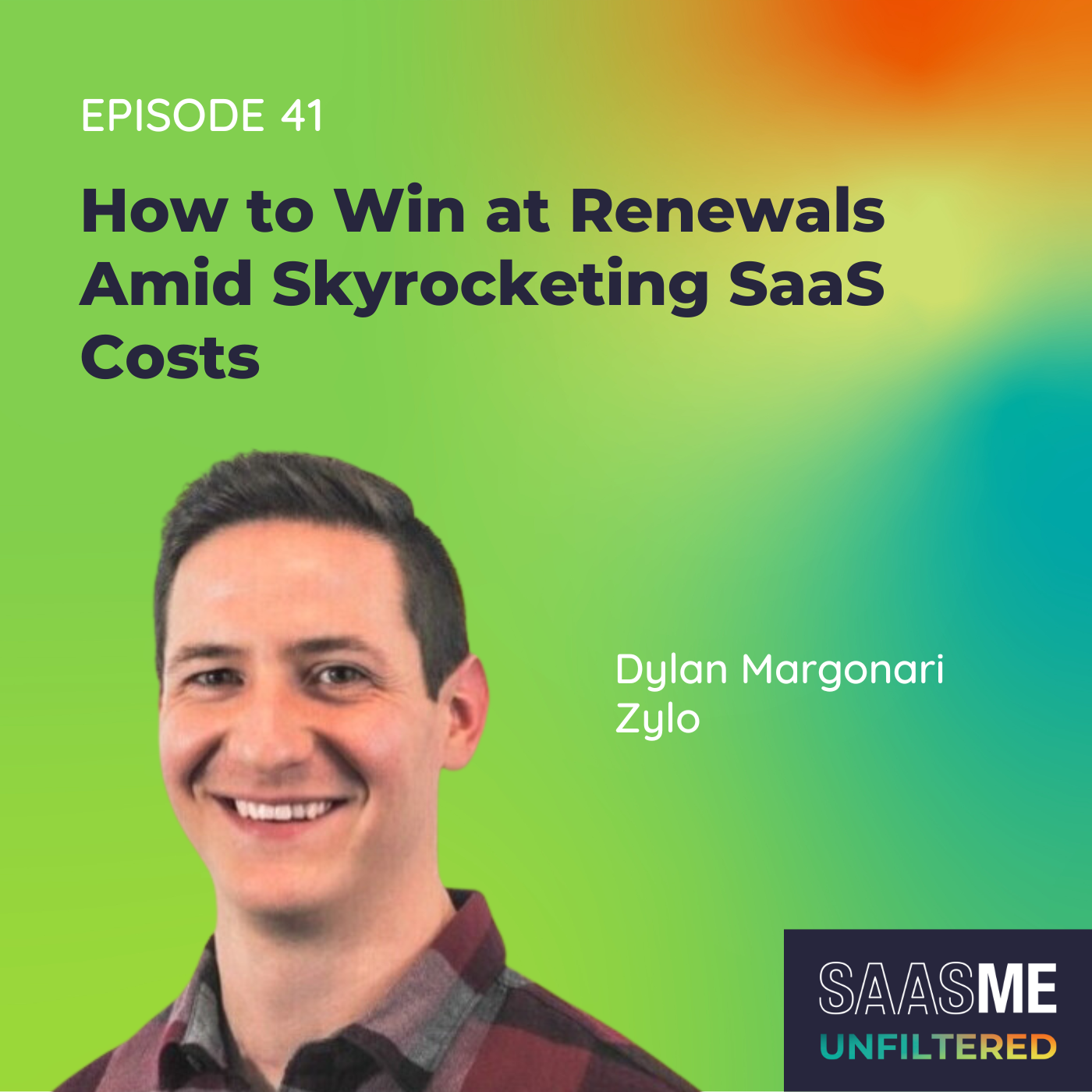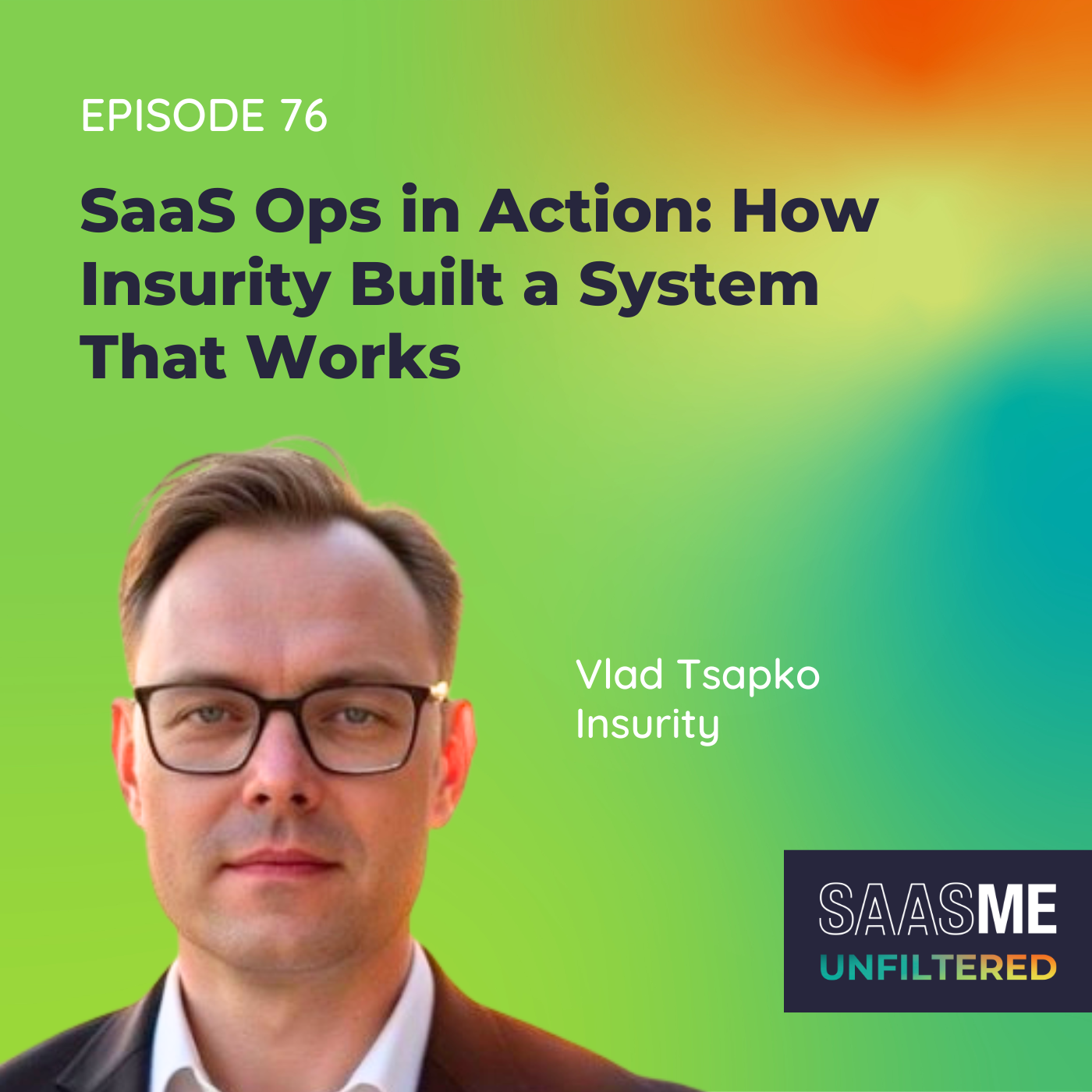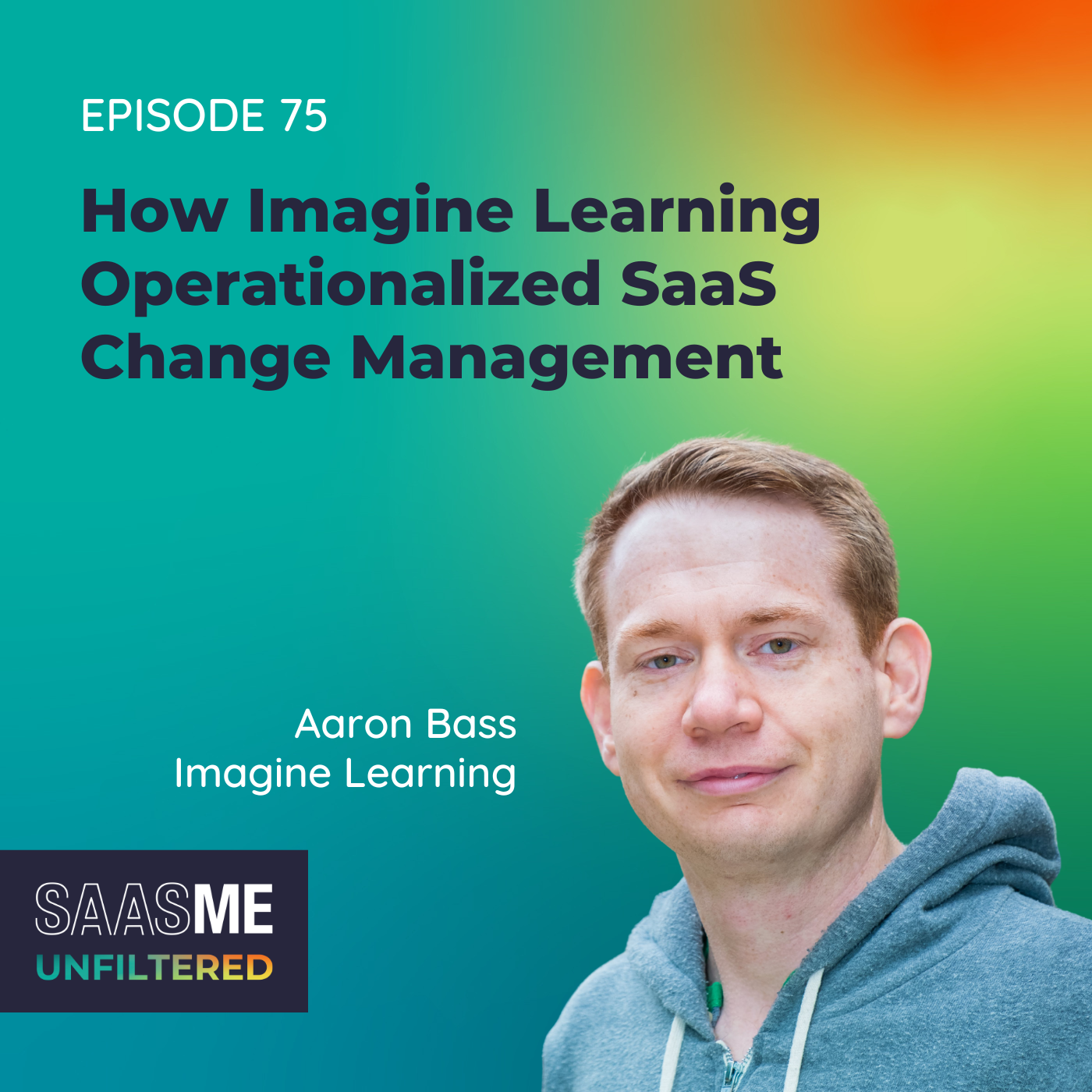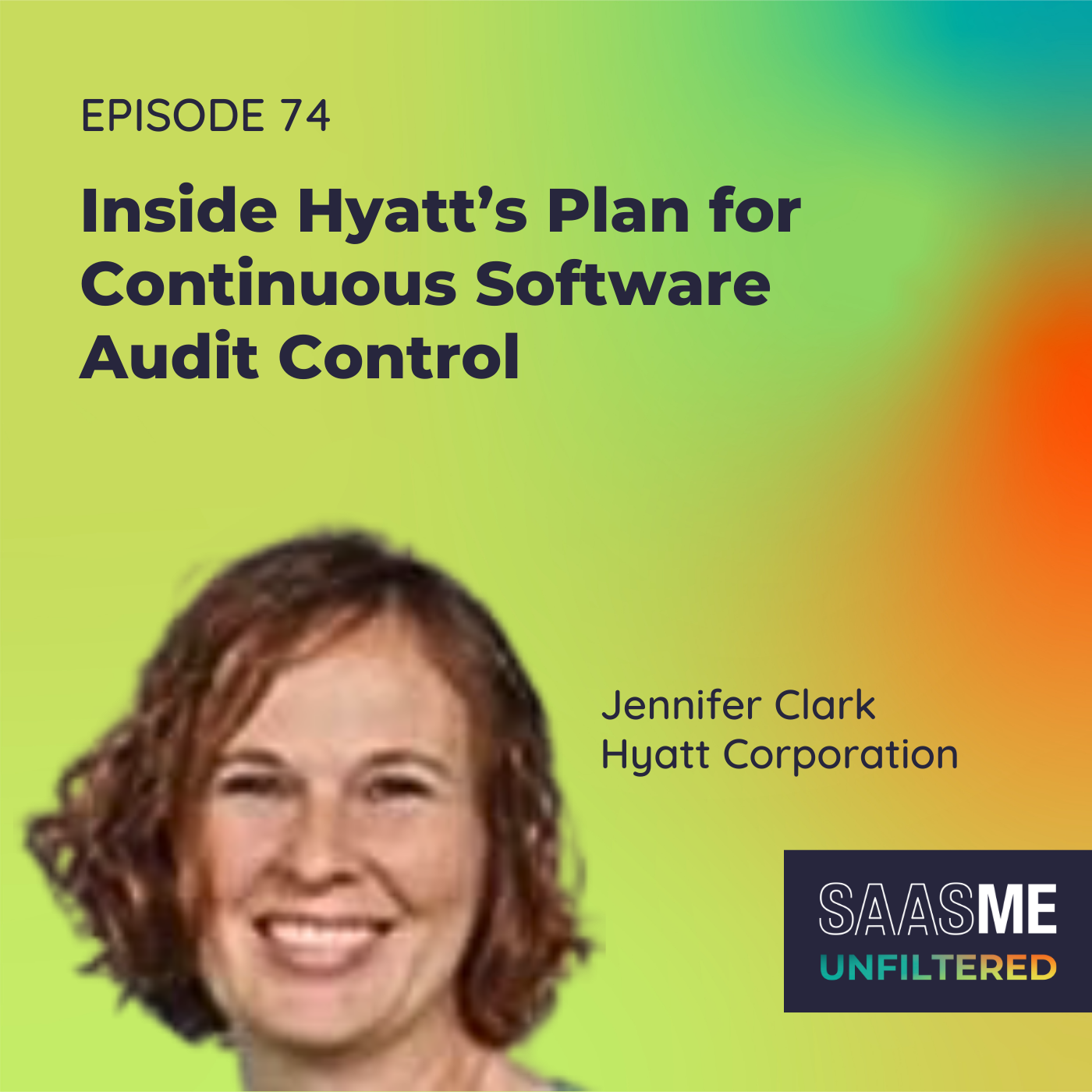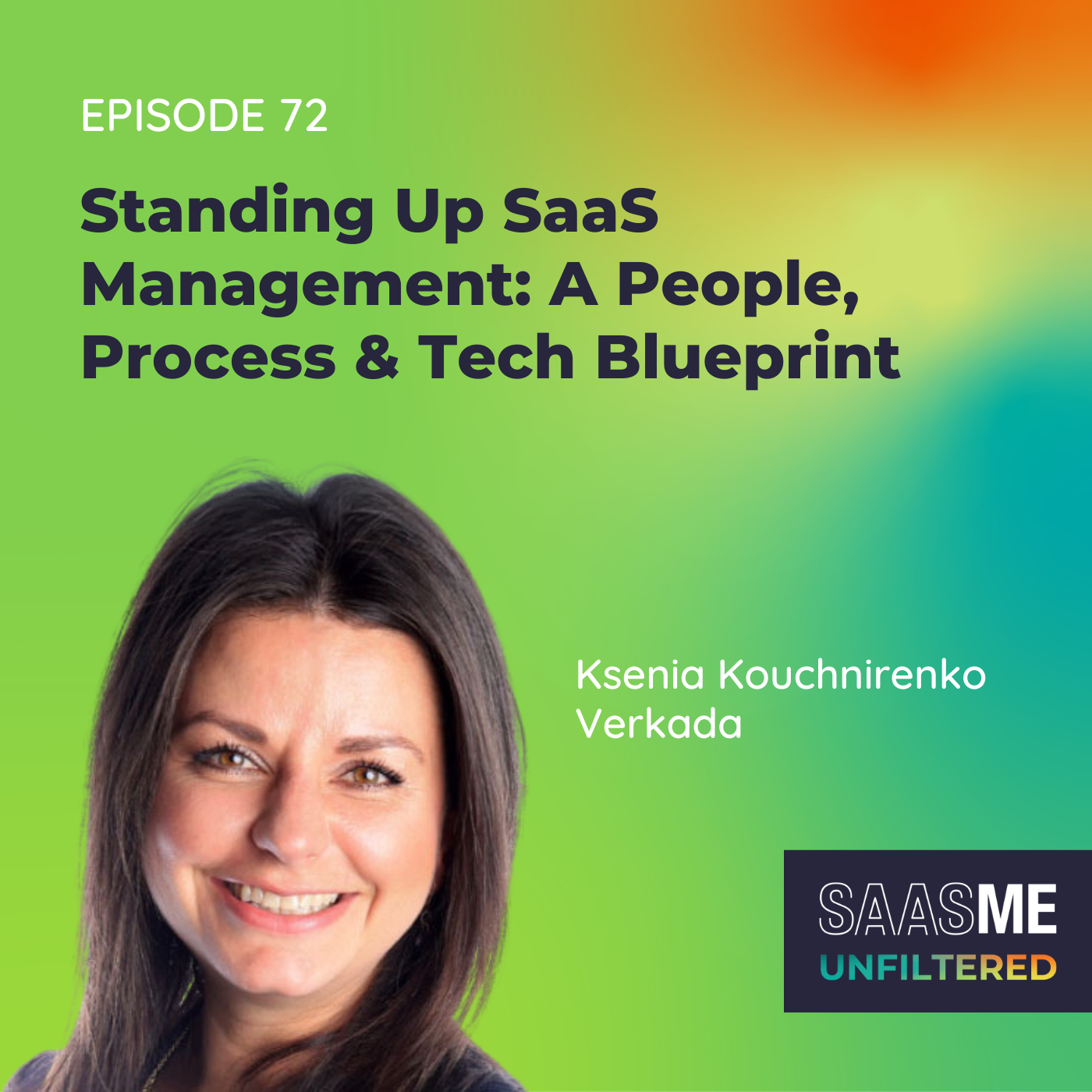Dylan Margonari: How to Win at Renewals Amid Skyrocketing SaaS Costs
- 0.5
- 1
- 1.25
- 1.5
- 1.75
- 2
Dylan Margonari: Never beat up your vendors, never beat them up on price. That's just going to put your relationship owner in a bad, sticky situation if you're just beating them up for the best price possible. So if I can give any advice, please avoid that at all costs.
Cory Wheeler: Hello, hello, and welcome to SaaSMe Unfiltered, the SaaS management podcast, the show with give it to you straight, real life advice from pros knee- deep in SaaS every single day, SaaS management superheroes just like you. We are back again for another episode of SaaSMe Unfiltered. So excited to have everyone joining us. I'm Cory Wheeler, Co- Founder and Chief Customer Officer at Zylo.
Meredith Albertson: And I'm Meredith Albertson, Chief Marketing Officer at Zylo. To say the least, this year has been full of change. There have been company downsizings, skyrocketing technology costs, and a greater business focus on cost savings initiatives. And these have really led to a greater need for actively negotiating with your SaaS providers. Now, at the same time, procurement professionals, who often lead these negotiations, must have a deep expertise to execute these negotiations at scale. Because there are a lot of new SaaS solutions being brought into the business on a daily basis. There's also a challenge with adhering to internal policies and processes. And the CFO's rallying cry for cost reductions. In today's episode, we're going to discuss how procurement leaders can get better at renewals and negotiating their SaaS contracts.
Cory Wheeler: And Meredith and I are thrilled to have one of our own SaaS management experts joining us today to put some color around all of this. So he was a professional hockey player for the South Carolina Stingrays. He's spent his entire career, thus far, in procurement, working in consulting at WNS Denali before coming over to Zylo. He just got married this past April, and lives in Pittsburgh, Pennsylvania, with a golden retriever named Abby. He's a frequent hiker, which is a newfound hobby. And loves disc golfing as well. Welcome to the podcast, Dylan Margonari. How are you, Dylan?
Dylan Margonari: Thanks for having me, Cory. Excited to join the podcast.
Cory Wheeler: Oh, we're excited to have you here. We want the insights, we want the real happenings in the SaaS negotiation space. So to get into that, Meredith mentioned the need for deep expertise in procurement, especially when it comes to renewals and negotiation. So you're doing this every single day. So let's start by diving into your background just a little bit first. So the obvious, how did you get from hockey into procurement?
Dylan Margonari: Not the common route for a procurement professional. Obviously, hockey was my first found passion there. Injuries took me away from the game and landed me in a what's next phase. I ended up leveraging my network, reached out to a previous coach, and he was in the procurement realm. He referred me to WNS Denali. I got my feet wet in procurement. And, now, I'm here at Zylo five years later.
Meredith Albertson: Well, Dylan, you were obviously very passionate about your hockey career. And we see you working every day with your customers and you have this amazing passion, which I think is probably similar to hockey. What is getting you excited about working with your customers every day?
Dylan Margonari: Truthfully, it's really helping our customers on their SaaS journey. It's not an easy task to tackle. They don't really know what their portfolio looks like. They don't have a grasp of everything that they're spending. Or maybe they don't even have a procurement process in place where they're mitigating risk, negotiating these agreements. So, really, seeing it from start to finish. And that ideal spot is having a full end- to- end procurement process, making sure you're negotiating preferred terms, preferred pricing. And then, at the end of the day, just seeing our sponsors at our customers be praised within their organization for standing up a process and saving their company a lot of money at the end of the day.
Cory Wheeler: When we talk about saving money, or just optimizing in the SaaS space, it's really all around those renewals. So we know how easy it is today to buy software as a service. It takes the swipe of a credit card and you're ready to go. So as a procurement leader, you have everyone in the company buying software and then it all comes to you to renew. So that's what makes it so hard to be able to scale. So for you, Dylan, you see many of the Zylo customers, you're operationalizing SaaS renewals and negotiations at scale across multiple customers. What makes SaaS renewals so challenging? And what do you really see companies struggle with the most when it comes to those renewals?
Dylan Margonari: I think you hit the nail on the head. Everyone is a buyer of SaaS. If you have a credit card, you can go online, view a product, punch in those numbers, and boom, your tool's there up and running, and you're ready to use it. So that's the most challenging part is it can sprawl out of control at a drop of the hat. If everyone has a credit card, they're spending it. So I think it's three different areas that make it challenging. So inventory, or visibility, really understanding what does that portfolio look like? Do we have a policy? Who's monitoring this? Who's reviewing this before we're purchasing? Bandwidth is probably the second piece that makes it challenging is not every organization has a dedicated procurement resource or team. So, oftentimes, we see it land on the department manager's desk to negotiate and monitor those agreements, user accounts. Obviously, they're managing other things. They don't have the time in the day to monitor every piece of software that they are utilizing in their department. And then the third factor is the market. It's ever changing. We've seen in the last year, no one has a crystal ball. You don't know what's going to happen year to year. With the market changing, obviously, that changes negotiation tactics. It changes how vendors are portraying their tool, selling their tool, things of that nature. And those three things are definitely the three that stick out in my mind that make this the most challenging thing to manage and monitor on a daily basis.
Meredith Albertson: Dylan, a critical part of renewals is having the right data to really make those strategic decisions. But what is the right data? What are those data points that a business needs to consider so they really can go into a renewal with intelligence and with power?
Dylan Margonari: Data, it's a gold mine in the procurement world. If you don't have it, for the lack of better way of saying it, you're shooting from the hip. May as well just throw it up on a dartboard, throw a dart, see what sticks, and that's the price you're targeting in your negotiation. And, quite frankly, I've been in that position in my experience, before I came to Zylo. I didn't have all those data points at my fingertips. Now, I do. And, again, it's a huge goldmine for us. We're going into every negotiation prepared. We have the utilization metrics, whether it's head count, user count, or data usage, what are you consuming in some of those types of agreements. And then, also, I think something that may get overlooked if you don't have the full portfolio, or the full visibility in everything you're buying, is what apps are overlapping? Meaning, what apps have the same exact functionality? We see it a ton, especially with project management tools, where you have 10, 12 project management tools not talking to each other. Each department's using their own tool. There's no efficiencies there. So having that data point. And then taking it to the stakeholders and the executives, and just sharing that insight with them. And saying, " Hey, what's the preferred tool here? Does it make sense to have 12? If so, great." But, in more cases than not, let's try to trim that down. Let's really look at this holistically. And try to bring in some efficiencies to our business, where our tools, our departments are talking to each other. We're making that SaaS software stack as lean as possible. And then, the best for last year, the biggest gold mine, is pricing insights. When you have that at your fingertips, you're able to go to the vendor. And you have visibility into that market price. You know if you're getting something at a good rate. And if you're not, you're able to share that insight with them and your stakeholders.
Cory Wheeler: So let me ask a follow- up question, Dylan, on the overlapping app detail, redundancies across the organization. This is an area that most leaders key in on quickly. Once they get visibility into every app across their environment, you start to see with plain eyes that there are many applications doing very, very similar things. But it's not that straightforward to get to a place of optimization, or to introduce demand management at the application level as renewals are coming through. What we've heard, what we've seen is, when you have executive teams, when you have buy- in from leadership that you are driving an initiative around standardizing tools, you see a lot of success there. What have you seen? How important is that executive buy- in for standardizing tools when you get to the point of renewal?
Dylan Margonari: I can't stress it enough. Getting someone from the C- suite level, or just a senior management director level, pushing those initiatives, it's huge. And it's key in the seat that I'm in. It's great to have a plan and you can push that plan. But without having someone putting in a policy, or ensuring that policy is followed, that plan may not happen. And having a voice from that senior level, executive level, passing that down to the rest of the organization at the employee level, it's huge. And that's where we've seen the most success for any SaaS program that we've stood up here. At least, I can speak from my experience, without executive alignment, sometimes, it stalls. I can't stress it enough, Cory.
Cory Wheeler: Let's hear some more of that insight. What are the things that you're watching out for during a renewal? Or even when you're buying software for the very first time, what are those things you're encountering during those negotiations? And what's the best way to overcome them to really understand the nuance, or the issues around just blindly renewing, or buying on a credit card at scale? What do you have to think about? What are those gotchas?
Dylan Margonari: Absolutely. Before I dive into the gotchas, I'll start with the planning process, or the pre- renewal process, which is key. As a procurement professional, you're not going to know the ins and outs of every single tool in the portfolio. You're not the expert. So you got to go find that information. And being a partner to those relationship managers that own the tools, they're in it every single day. They're the admins. They're pushing all the right buttons in that tool. Interviewing them, and really understanding, " Hey, what are the nice to haves or must haves in the tool? What was the relationship during the last term? Did you have good support? Did you have poor support? Was there something in the tool that's just not working right?" And then, also, user count, things of that nature that are more obvious. But, again, just partnering with your relationship owners and really getting that full picture. And, again, back to data at our fingertips, getting that data so you can prepare a negotiation strategy. And put the best foot forward for your customer's needs. Now, the gotchas, back to the original question here, Cory. And I'll start with, any new purchase, probably goes into any renewal as well, but it goes beyond price. A lot of the time in the procurement realm, your focus can lean price first and price everything. Not the case. It's not a one and done here. You're going to have this partnership for probably many years so relationship is key. When you're looking at a new purchase, understanding, " Hey, what is that right user count?" And then adding a little bit of buffer into that user count to ensure, " Hey, your needs are met throughout that contract." And you're not getting hit with extremely overpriced overage overcharges that we see from all of our SaaS solutions there. To broaden that topic is an expansion rate table. So you're not going to hit the user count right on the head every single time. So negotiating an expansion table for any add- on users throughout that term. For a quick example, let's use 100 users. You're at this price point for 100 users, 200 to 300 users, you already reduce price point, just economies of scale there. So building some sort of table that, again, if you need to add on users, you don't have to renegotiate. You don't have to reinvent the wheel every single time you have a headcount increase, or you bring on a new individual to the company or department. And then, price cap. We'll probably dive into this a little bit later in the podcast, I'm assuming, just with the economic climate where it's at. But today's day, we're seeing crazy price increases. I'll be able to dive into some of those stories, but I digress. But getting a price cap that says, " Hey, 3% to 5% increase upon renewal," that's fair. Again, it's going to reduce the time of that renewal cycle. And, again, you're not going to have to reinvent the wheel every time you're signing a new contract with your vendors. And then, the last point, another gotcha to look out for, is auto- renew clauses. This can be a trap sometimes, especially if you don't have the visibility into your SaaS portfolio. But auto- renewals, they're just going to continue to auto- renew, send you invoices every time the contract expires. So making sure that language is not in the agreement allows you to cancel applications when you need to cancel them. Those are some of the gotchas and, quite frankly, every renewal, or every time you're purchasing SaaS, those four things I would definitely look to build into your contract.
Meredith Albertson: Yeah, those auto- renewals will definitely get you. Dylan, it's renewal season. I am personally going through renewals right now. So I have a question that I'm really curious about as I'm looking at our contracts. What do you think about single year renewals versus multi- year agreements? You always get, " Well, this price for this and that price for this." But there's a lot more to that and analyzing that. So I'd love your insights there, especially as we're heading into looking at those agreements.
Dylan Margonari: Oh, Meredith, you bring up the greatest debate in procurement today, multi- year versus single year. Short answer, in today's economic climate, I say do away with the multi- year agreements. And, quite frankly, that's a trend we're seeing for our customers. There's so much uncertainty in the market, as well as just headcounts in the tech industry in general, that it's hard to commit to a long- term agreement without knowing, or having a crystal ball, what's going to happen in a year, two years from now, three years from now. So, again, short answer, do away with it. It's hard to change those multi- year agreements midterm. But I will say there are ways to negotiate multi- year agreements. And it goes back to those four or five gotchas that I just ran through. Making sure those are in the agreement so that you have price protection, you have transparency, should that contract need to change? In short, do away with them for now.
Meredith Albertson: Note to self, I am definitely jotting that one down. Well, Dylan, success is very important to you. I know that you really, when your customers are getting wins, that that means a lot to you, as it does across our team. I'd love to know a little bit more about how you are partnering with your customers to think about success, to define success? Every customer may be a little bit different, but would just love to get your insights there.
Dylan Margonari: This all starts with planning six months, a year, in advance. When I say planning, it's not just from a budgetary perspective, but it's from a portfolio perspective. Understanding, do you have redundancies? Do you have tools where department leads aren't happy with them? They're just not cutting it. They're not delivering the value that you need. So planning that a year in advance really allows your procurement professionals to understand, which applications can we just move forward with? Push for a flat renewal? Which applications do we need to start those conversations five months in advance, six months in advance, to really understand where that price point sits? So that they have the knowledge and ability to make a decision to sunset a tool, or migrate to a different tool. And make sure you have that implementation time to do so. I think planning is 100% number one key. Proactive approach to renewals, meaning starting these renewals 120, 90 days in advance. Making sure you understand any price increases, any pricing model changes, anything that the vendor's proposing different from last year. And being able to portray that to your relationship owners, and putting together a good negotiation strategy for a good result. To the second piece of that question, how are we seeing customers define success? I think the most obvious answer is tangible dollars. How much are we saving? Yeah, everyone loves the money. So hard savings, cost avoidance. But I also have seen our customers define success by app count reduction. Where you do see a ton of overlap, reducing that full SaaS portfolio by 10%, 20%, whatever makes sense for your organization. And then, the last piece, which I've seen crop up more and more, as more and more CFOs get involved in the SaaS program, is budget reductions. So not hard savings or cost avoidance, the lingo we would use in common day procurement practice. But what did we budget last year versus what are we spending this year? That's a huge factor in the way a lot of our customers are starting to define their success.
Meredith Albertson: That was really helpful. And I think especially pertinent during this time where we're, like I said, getting into that renewal season. And these are becoming very important conversations. And love you're always thinking about the wins with the customers that you work with. I'd like to move a little bit into, I think, a meaty topic around SaaS negotiations. Now, once a company has gone through a lot of those gotchas, set up their contracts, all their data ducks are in a row for the renewal, the foundation's there, it feels solid. But after that, when you actually get into the active negotiation, that is a place where companies often seem to struggle for a lot of different reasons. Now, this is what you do every single day for your customers. And I think that there's a tremendous amount of insight and information that our listeners can get from you today. But before we get into the strategies and the tactics, I'd really like to understand, from your perspective, what is going on in the market right now? We are hearing a lot of noise, a lot of chatter, especially around pricing. What are you seeing?
Dylan Margonari: The noise is loud right now, and it's ever changing. And to address the elephant in the room, SaaS is increasing in price. So everywhere, no matter what it is, you are seeing price increases. And, in fact, since I've been in this role, if 5% to 7% was common, now we're seeing upwards of 15%, even higher than that, across the board, within the tech industry. It's hamstringing a lot of our customers. What do you do? You need the products, and the market is just pushing price, and applying more and more pressures to our customers, just within the market in general. So, obviously, prices are increasing across the board. But we're also seeing the factors of our customers are reducing budget. They're reducing head counts, which impacts the renewal and the leverage that any procurement professional has during a negotiation, which makes it a little bit tougher. You're renewing a lower headcount. You can suspect that that rate will increase per user. So it's definitely challenging. So, oftentimes, in an economy like today, a flat renewal is still a win. I want to highlight that. Keeping a flat year- over- year price is something that I push for when we are reducing headcounts, like we see it. And the specific customer story that I really want to dive into, it's quite scary, and definitely goes right within this topic of headcount reduction, downsizing license counts. And we're seeing price just skyrocket. So for this example, 1, 000 users purchased last year, we were reduced to 500 users. And, somehow, that order form comes back at the exact same cost. You cut 500 users from your agreement.
Meredith Albertson: No way.
Dylan Margonari: Yeah, it's mind blowing, right?
Meredith Albertson: If you are not unlocking the full value of your SaaS, what are you doing? There is no denying it. SaaS is mission critical to your company's growth and success. And as the number two operating expense for most organizations, it's your biggest opportunity to save money and drive efficiency. The time is now to do something about it. Join me, and your fellow IT, SAM, finance, and procurement leaders at SaaSMe. SaaSMe is the industry's only dedicated SaaS management event where you can sharpen your skills, hear from your peers, and learn how to unlock value and responsible business growth through smarter SaaS management. Register today at saasme. com. That's S-A- A- S- M- E. com.
Cory Wheeler: I would agree. I think it's that March to profitability. Software companies are not only reducing their bottom line costs and looking at employees and headcount, but then they're increasing the top line as well with pricing increases across the board. We see that everywhere. So because of that, going into negotiation, it's super helpful to understand what to expect from your various providers internally. What do procurement leaders need to know about their counterpart in the negotiation, their partner, the vendor, beyond price, to have successful renewals? Let's say you're locking down that flat pricing year over year as an entry point to the conversation. But then how else do you execute that great negotiation that drives a good partnership, going forward?
Dylan Margonari: Cory, you hit the nail on the head again. Partnership is huge. And being transparent with those vendors is a great starting point for any negotiation, especially in the economic climate that we're in today. A couple of areas to key in on are, fiscal year ends, quarter ends, a lot of the times the sales reps... Well, we know that they have quotas to meet. And so they're pushing for those end dates. Using that to your leverage to get to a preferred result, whether it be signing an agreement early for a flat renewal, or increased incentive, increased discounting, using that to your leverage and pushing for that, and coming to a win- win scenario with a vendor at the end of the day. Also, knowing is your provider publicly traded or private? Because publicly traded companies, as we all know, they're reporting their revenue on a quarterly, annually basis. So they have additional targets to meet. And, oftentimes, that can be challenging in a negotiation if, let's say, they've had a tricky quarter. So we've seen this recently. A couple of months back, I had a customer come to us. They actually reduced their headcount significantly for said renewal, which put me in a tougher situation during the negotiation. Not much leverage. The price was increasing. We did know the vendor was a publicly traded company. We did a little bit of research on that fact. And presented a more partner like concession to them in the form of a case study, reference call, and branding. So by doing that, that's giving them more ammunition to take to their market and, hopefully, close more deals, more sales on their end. But also, in exchange, we were able to negotiate a flat price with no increase on that renewal. I want to say, if I remember correctly, it was around 20/25% increase from the previous year.
Meredith Albertson: Say your tech provider, the one that you, as a procurement leader, are negotiating with, you're in the negotiation and they are not budging. Is there a time when you should just walk away from the table? Say, " I'm done."
Dylan Margonari: Absolutely. And that's one of the tactics we do use on a common day- to- day basis. In our world, we call it ghosting. Leaving the vendor out to dry, not responding. But to get to that end result of actually physically leaving the table and deprecating a tool, that needs to start six months to a year in advance. Back to that planning conversation we had earlier in the podcast. If you don't know what other tools you can transition to, or in some cases, you don't have a tool that's already in your portfolio that you can easily migrate to, that means you need to onboard something new. And we know the trickiness of that. You need implementation time. You need more resources. Sometimes, it's very costly to change and migrate away from a tool to a new one. So the earlier, the better. I can't stress that enough. Early, early, early. Start those conversations early. Be prepared. Know what you have in your portfolio, or know what other competitors are out there in the market that you can easily transition to and migrate away from a previous tool. So short answer, early, early, early.
Cory Wheeler: You're right, that early approach drives internal alignment, which then flows through to how you communicate with the vendor throughout the entire team, procurement, the business. Definitely good advice there on the ability to leave a contract if you've got to. So you've really shared a lot of advice here, however, what would you say is the most underrated negotiation tactic, in your opinion? And what's the number one tactic you need to avoid?
Dylan Margonari: Well, start with the bad first. Avoid, never beat up your vendors, never beat them up on price. That's just going to put your relationship owner in a bad, sticky situation if you're just beating them up for the best price possible. So if I can give any advice, please avoid that at all costs. And then the most underrated is value concessions, for me. Well, one, knowing your vendor and knowing what you can leverage to get to the end result, the win- win scenario at the end of the day. And whether it be putting a case study in front of them, or willing to do a reference call, branding. They're not always thought of as the go- to negotiation lever. So pulling those out when you're in sticky situations, especially in the economy today, has proven to be a very, very, very good tactic for me.
Meredith Albertson: Dylan, so much of what you've covered with us today really speaks to the heart of negotiations and what goes on during that process. Are there any tricky situations or scenarios you've seen, being in the thick of really negotiating a renewal for one of your customers?
Dylan Margonari: Totally. Yeah, I've seen them all, I think, this year. They just keep popping up. I keep getting surprised, which is not always a good thing in the procurement realm. It makes our job a lot tougher, but it's not insurmountable. So one area, we've already talked about price increases. I've seen countless times this year, 40% increases on a renewal that has not changed. You're purchasing the same products, same user count, same everything, verbatim, but price increase by 40%.
Cory Wheeler: Wow.
Dylan Margonari: Yeah. I'll pause there. 40%.
Cory Wheeler: Yeah, that's a bit of a mic drop.
Dylan Margonari: And that was the reaction I got from our relationship owners when I presented it to them, mouth hitting the floor. " Are you kidding me? We've been a partner with these guys for five plus years. How is this possible?" Again, going to back to how do you approach that is a partnership approach with your relationship manager for the tools, as well as making sure executive alignment. I'd like to say procurement individuals have a strong voice in negotiations. But, sometimes, you need a voice from a relationship owner, or an executive, to make that bell ring a little bit louder. In both cases, we were able to reduce from that 40%, not completely flat, but we were in a better position at the end of the day.
Meredith Albertson: Outsider pricing, we talked a lot about how the landscape is changing today and dealing with the market nuances. What are some new scenarios in renewals and negotiations that you have seen pop up this year, that historically you may not have run into?
Dylan Margonari: I said I've seen it all, and I continue to see it all, and continue to get surprised. But new pricing models, this is a newer thing, specifically in the data housing space. I think it's a trend that's picking up steam, where some of these data housing vendors traditionally just charged per user. Now, they're adding, on top of the per user rate, they're adding an additional consumption rate to it. Again, this is another scenario where contracts are not changing. We're purchasing the same thing. But we're just adding another layer to that contract, more money in the vendor's pocket for this same verbatim service that has been going on for the previous contract year. And to put that in perspective for you, with these consumption fees being added to contracts, I'm seeing it in the neighborhood between 25% and 50% increases on top of the user rates that have already been paid. It's another mouth hit the floor moment for our relationship owners. And another layer to that is, not only are they adding these fees to the contracts, they're letting us know 60 days in advance of a renewal. You both own some tools. Your owners' software licensing agreements within your organizations, tell me, does 60 days give you enough time to digest a 25%, 50% increase and prepare for that?
Cory Wheeler: No way.
Meredith Albertson: Or to prepare for an alternative. Yeah, that one's crazy.
Cory Wheeler: Especially when budgets are set a year in advance, based on what you knew about the previous year and what changes you were going to make. I'm assuming buyers will build in a little bit of buffer, sometimes, for any moderate pricing increase. But this is a business stopper. That makes things very difficult.
Dylan Margonari: Totally. And to your point, Cory, yeah, that planning took place probably a year in advance with budgeting. And how do you get something approved from that magnitude?
Cory Wheeler: So we often hear renewals, and procurement is the first thing that comes to your mind. But that's not always the case internally. Who are the people you work with? And how do you support them through that renewal process?
Dylan Margonari: It's not a one man job. It's a slew of departments and individuals to make sure renewals are renewed on time and as they should. So it's truly a team sport. So some of the personas that I'm working with day to day is IT, security, procurement department, if our customers have it, as well as finance. So let's dig into each of those areas. So in the IT realm, we're really focusing on user counts. Of the users purchasing or utilizing the tool, who's inactive? Who's active? Do we have good adoption across that tool? Does it make sense to renew at the same user count from last year? Also, app redundancy, overlapping functionality, making sure our stack is as trim as possible. And making sure we're deprecating tools that can be migrated to other tools within the portfolio. And then, also, servicing app utilization opportunities to connect those tools so that we can have that data point at our fingertips for each renewal. Understanding inactive users, things of that nature. Diving into security, specifically the CISO realm, is really mitigating risk. So surfacing any new applications that are coming through the system for the first time. Making sure, " Hey, was this properly checked by security? Do we know this tool? Is there any risks? Are we sharing any data?" So making sure we're doing that on a regular cadence with security folks. So the procurement folks, it's more of a support perspective from my seat. Hell, there's a ton of renewals. There's a ton of SaaS everywhere, especially if we're talking enterprise size customer. There's so many. Not one person can manage that. It takes a team of procurement folks to be able to negotiate these on a regular cadence. So just providing bandwidth support, as well as expertise, whether it be price benchmarking or any of those measures. And then the last sector is finance. And I'm seeing more and more of this, this year alone, CFOs are wanting to get involved in the programs. They're more cost focused, making sure, " Hey, we're not just lighting money on fire. We're actually utilizing tools. Our budget's correct. We're able to reduce in right size where possible." And making sure our budgets align with their needs at the end of the day. Again, I can't stress enough, it's not a single department, single person. It's truly become a team sport to renew SaaS products.
Meredith Albertson: As you mentioned, I don't think there's any shortage of SaaS or software in a business, and no shortage of renewals. Some of these teams are managing hundreds and hundreds of renewals a year. And negotiating them is clearly a lot of work and it requires the right expertise. And as you mentioned, IT and procurement leaders are often challenged with bandwidth and with time. This seems like a natural moment in a company where you could start to investigate, " Do I want to bring on a partner to help me tackle this?" That's a big decision. You're really building a relationship and trust with someone there. I'd love to know, from your perspective, what do you think if companies are at this point, they're looking to make that decision to bring on a support person, what should they be looking for in a partner?
Dylan Margonari: There's so many options out there, so how do you choose? My advice is look for someone that is a partner you're going to be able to build a relationship with built on credibility, expertise. Someone that you can just trust that is going to put your organization's needs first. I can't stress that enough. So what you're looking for is, basically, someone to be a member of your team. Not just an outsourced team or individual that, " Hey, they're just negotiating a contract based on price, beating up vendors." You need a more partnership approach. Oftentimes, I think a big mistake, just finding a more or less black box approach, where you're sending a renewal request to an alias, where there's a team of individuals behind that alias. And it gets assigned to anyone. It's not a consistent person that you're working on renewals and SaaS management on a daily basis. Someone that you may not know. You may not have the trusted credibility or expertise. This may be the first time you're meeting the individual and they're renewing a product on your behalf. So I can't stress enough partner like, consistent, dedicated resource, that has the best interest for your organization.
Cory Wheeler: I think that really highlights that SaaS just hasn't been commoditized. And I think, no matter how much you look at it, there are tens of thousands of applications out there with evolving licensing structures. And because the way that they're used is so important to a company, outsourcing that, and pushing it to that black box type of scenario, really tries to commoditize what that is. And if you're pulling the stakeholder out of that equation, you're pulling out the soul of that conversation and partnership that you're trying to get to. You eliminate all of that. And it becomes very much pricing only and that commoditized view. You've gone through so much today. This has been fantastic. I hope every procurement leader out there and IT leader is listening to everything that Dylan's offered today. But what's the one thing that procurement leaders can start doing today to be able to drive those successful renewals, going forward?
Dylan Margonari: Align with your executive team. This is huge. Economy aside, aligning with an executive team, and making sure they have visibility to these types of insights. Most likely, they may not know the breadth of the portfolio of SaaS tools within their organization. They might not know that you have 15 project management tools, and we're renewing all of them, auto- renew. Getting that buy- in from an executive leader and voicing that down, it's huge. Again, it makes that bell ring a little bit louder for the employees to follow a policy or a procurement process. And then voicing why it's so important. It's not just price, it's more than that. It's making sure there's no risks in your organization from a security perspective. Obviously, savings is great, and that's what we look for, but it's a lot more than that. So getting your executive team on board with this program, and pushing these initiatives, is 100% the best thing you could do tomorrow.
Cory Wheeler: I think you nailed that. So let's close this one out with a little bit of fun. We'll go through our rapid fire segment. Are you ready for that, Dylan?
Meredith Albertson: I'm looking forward to this one.
Dylan Margonari: I am ready. Let's do it.
Cory Wheeler: You're a Pittsburgh guy. You're a Pittsburgh athlete. So favorite Pittsburgh pro athlete? And I'm going to give you three choices. Sidney Crosby, Ben Roethlisberger, or Roberto Clemente?
Dylan Margonari: If my dad was on the call, he'd be Clemente. He's been a fan of his entire life. But I got to stick with hockey, Sidney Crosby.
Meredith Albertson: Well, speaking of hockey, what is the one thing that you miss most about playing?
Dylan Margonari: Got to be team camaraderie. I can still lace them up, I can still play. But just having those, I'll even say long bus rides, of playing cards in the back of the bus and just being around the boys. It's something you can't replace. So hands down, that's an easy answer for me.
Cory Wheeler: All right, little transition here. How do you feel when a solution provider bypasses you and goes directly to your stakeholder?
Dylan Margonari: One word, frustrated.
Meredith Albertson: There was no hesitation there.
Dylan Margonari: It's tough. It's tough.
Meredith Albertson: Dylan, as a SaaS services manager, what brings you the most joy in your day?
Dylan Margonari: Seeing our customer sponsors receive praise within our organization. This isn't an easy problem to tackle, and they are definitely heroes within their organization. So just being able to guide them, and provide advice, and building them up. And then seeing them receive that type of praise from their leaders internally, it gives me a ton of joy.
Cory Wheeler: Well, Dylan, I think that's something that you do every single day with your customers. We can't thank you enough for coming on and sharing a lot of your wisdom today on SaasMe Unfiltered. I'm hopeful that a lot of our listeners have been taking great notes. Because it is the roadmap to being able to drive successful renewals, to implement a procurement based process with your internal stakeholders. And nobody does it better. Dylan, thanks so much for coming on.
Dylan Margonari: Thanks for having me. This was awesome.
Cory Wheeler: Did you enjoy the episode? Pass it along to your friends. Subscribe to get notifications for the latest episode, share your favorite takeaways, and join the conversation on social media using# saasmeunfiltered.
DESCRIPTION
SaaS suppliers are increasing prices at mind-boggling percentages on a spend category that’s already through the roof. That makes getting a favorable renewal feel like a losing scenario. But according to procurement pro and SaaS negotiator Dylan Margonari, there are ways to find a win. In this episode, Margonari delves into how to prepare for your upcoming renewals, the big gotchas in SaaS contracts, and tactics to mitigate the one-two punch of those steep price increases.
Today's Host

Ben Pippenger

Cory Wheeler

Meredith Albertson
Today's Guests


